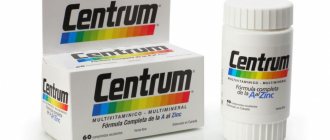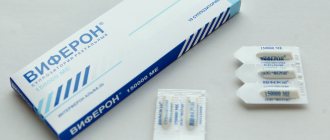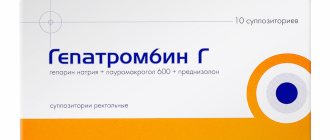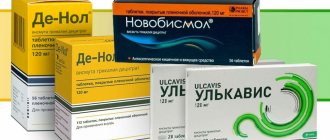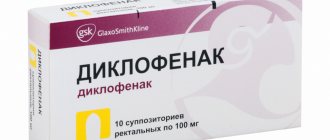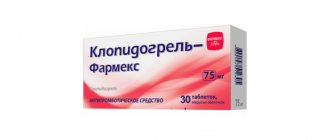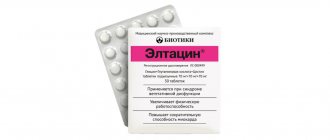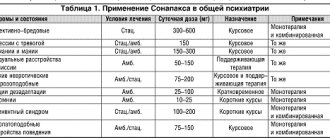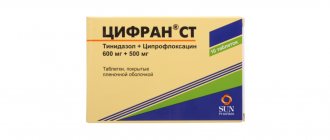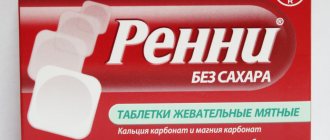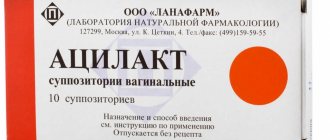“Posterizan” is an effective suppository that allows you to cure hemorrhoids in just a few days. The drug can be used even during pregnancy and lactation. There are practically no contraindications or side effects. Therefore, the product is recommended by more than 90% of buyers.
Composition and release form
| Ointment | 1 g |
| microbial cells of E. coli killed by phenol | 330 million ± 25% |
| excipients: lanolin; Vaseline, paraffin, phenol (preservative) |
in aluminum tubes of 25 g, complete with applicator; 1 tube in a box.
| Rectal suppositories | 1 sup. |
| microbial cells of E. coli killed by phenol | 660 million ± 25% |
| excipients: emulsifying solid fat; macrogol-glycerol; hydroxystearate; phenol (preservative) |
10 pcs in blister; 1 blister in a box.
Instructions for use "Posterizan"
Suppositories are used rectally 2 times a day - in the morning immediately after sleep, and also in the late evening just before bedtime. Moreover, if there is a need, you first need to go to the toilet and only then light a candle, having previously completed a hygienic procedure.
The ointment is also applied 2 times a day to the rectal area. The principle of use is exactly the same - you first need to rinse the anal passage and wipe dry. If necessary, first go to the toilet and only then rub in the composition with gentle massage movements.
The course of treatment, regardless of the form of the drug, lasts 7 days in a row. Then a break is taken, after which, if necessary, the course can be repeated, but only in agreement with the doctor. Effective therapy often requires a change in drug.
If the described rules are followed, Posterizan ointment and suppositories are safe for health. No cases of overdose have been reported. But if an allergic reaction is observed, treatment is stopped and a specialist is consulted for additional consultation.
Pharmacodynamics
The active component - a bacterial culture suspension - contains inactivated bacteria and their metabolic products. Stimulates the T-system of immunity, increases the phagocytic activity of leukocytes and cells of the reticuloendothelial system, a number of humoral factors of nonspecific immunity. Increases the formation of antibodies at the site of exposure and local tissue resistance to the effects of pathogenic microflora due to the content of concentrated lipopolysaccharides of cell membranes and metabolites of E. coli of various strains, incl. resistant to antibiotics and other antibacterial agents. Reduces exudation, normalizes the permeability and tone of blood vessels, stimulates the regeneration of damaged tissues.
What is the difference between Posterisan and Posterisan Forte?
These are two analogues that contain the same active ingredient - E coli bacteria. However, the amount of this component differs (per 1 g):
- “Posterizan” – 300 million units;
- “Posterizan Forte” – 500 million units.
The “Forte” variety also contains hydrocortisone in the amount of 2.5 mg per 1 g. The auxiliary components are:
- petrolatum;
- lanolin;
- phenol.
In terms of indications, contraindications, and side effects, the drugs are no different. They also have similar instructions for use. It is worth keeping in mind that Forte is used in advanced cases, when hemorrhoids, itching, anal fissures and other symptoms have been observed for a long time and in an obvious form.
As for the usual form “Posterizan”, it is used at the initial stage. If it is difficult to decide on a course of therapy on your own, it is recommended to first consult a doctor. Any self-medication carries certain risks.
Directions for use and doses
Externally, rectally. Ointment - apply a thin layer to the affected area of the skin and mucous membrane in the morning and evening, as well as after each bowel movement. For deeper introduction of the ointment into the anal canal, you can use a screw-on applicator.
Suppositories are used in the morning and evening, as well as after each bowel movement. The combined use of ointments and suppositories is possible. After relief of the symptoms of the disease, treatment is continued for 2–3 weeks to stabilize the effect and prevent relapses.
Contraindications and side effects
The product can be used by almost all patients, with the exception of cases of individual intolerance to phenol, which is also included in the suppositories. During pregnancy and during breastfeeding, treatment with suppositories and ointments is possible, but only in consultation with a doctor.
Sometimes side effects associated with an allergic reaction to phenol are observed. The skin may itch and become red. In such cases, it is necessary to stop taking it and consult a doctor for a possible change in therapy.
Material and methods
The study was conducted from December 2015 to August 2021. It was a single-center, double-blind, randomized, parallel-group study. Each patient was assigned a randomization number.
Inclusion criteria:
1) age from 18 to 60 years;
2) the presence of chronic anal fissure;
3) being in a hospital;
4) written consent to participate in a clinical trial.
Exclusion criteria were:
1) patient’s refusal to study;
2) the occurrence of a life-threatening condition (acute profuse bleeding, myocardial infarction, acute cerebrovascular accident, Quincke's edema, anaphylactic shock, as well as any condition that required transfer of the patient to the intensive care unit);
3) Crohn's disease, ulcerative colitis, malignant tumors of any location;
4) inability to independently fill out a visual analogue scale (VAS);
5) participation in another study at the same time or within the previous 3 months;
6) the patient has already been selected for this study.
For inclusion in the study, 146 patients were prescreened, of which 110 patients were selected in accordance with the protocol. These patients met the inclusion criteria; there were no exclusion criteria at the time of screening and randomization.
All study procedures were completed in 102 (92.7%) patients out of 110. After the study was conducted and it became known which drug (posterisan or placebo) corresponded to a particular randomization number, the patients were divided into two groups. Group 1 (control) included 48 patients who received placebo for topical application. The main group - 2nd consisted of 54 patients who were treated with the drug posterizan.
8 (7.2%) patients dropped out of the study due to failure to appear on the 15th day for personal reasons or the patient's unwillingness to participate in further follow-up.
During the study, no serious adverse events were identified in any patient.
Methods for assessing each patient in the main and control groups included:
1) profilometry (at the preoperative stage);
2) general and biochemical blood test, hemocoagulogram (at the preoperative stage);
3) blood test for carriage of infections: RW, HIV, hepatitis B and C (at the preoperative stage);
4) hospitalization;
5) randomization with distribution of the drug (posterizan or placebo) to the attending physician;
6) surgical treatment (under spinal anesthesia) - excision of the anal fissure with/without pneumodivulsion of the anal sphincter;
7) prescription of painkillers;
 cytological examination of a smear-imprint from the area of the postoperative wound before dressing on days 2, 15 and 28 after surgery;
cytological examination of a smear-imprint from the area of the postoperative wound before dressing on days 2, 15 and 28 after surgery;
9) digital examination of the anal canal and wound defect daily during dressing;
10) identification of possible postoperative complications, which were recorded in special documentation;
11) daily dressings with one of two drugs (posterizan or placebo);
12) daily filling out by the patient of a 10-point VAS pain questionnaire;
13) visual assessment of wound healing by a doctor on days 2, 15 and 28 after surgery;
14) daily assessment of the restoration of self-care ability according to the Barthel scale;
15) assessment of quality of life on the QoL SF-36 scale before surgery, on the 28th day after surgery;
16) control visit on the 28th day and the end of the study.
The study involved patients with chronic anterior or posterior anal fissure. Treatment took place in a hospital. Each patient underwent surgical treatment. The duration of the operation ranged from 18 to 40 minutes (average - 23.8±7.7 minutes).
Surgical treatment of anal fissure using controlled pneumodivulsion of the anal sphincter is a modern technique. This low-traumatic method of eliminating spasm of the internal sphincter is performed using a pneumatic balloon. This type of surgical intervention allows you to effectively eliminate spasm of the internal sphincter. Excision of the fissure with pneumodivulsion of the anal sphincter significantly reduces the number of relapses of the disease and at the same time minimizes the risk of developing anal sphincter insufficiency and disability of patients [1].
A comparative analysis of the two groups of patients did not reveal significant differences in gender and age composition. Thus, in the main and control groups there were 36 (67%) and 24 (50%) women, respectively. Men in the main group made up 18 (33%) patients, in the control group - 24 (50%) ( p
>0,05).
The age of the patients in the main group ranged from 22 to 69 years, but most of them were people of working age (average age - 45.8±13.2 years). In patients in the control group (from 24 to 72 years), the average age was 43.2±12.2 years ( p
>0,05).
There were also no significant differences in the nature of surgical interventions. In most cases, patients in the main and control groups underwent surgical treatment involving pneumodivulsion of the anal sphincter with excision of anal fissures: in 47 (87%) and 40 (83.3%), respectively, since, according to profilometry data, these patients were diagnosed spasm of the internal sphincter. Excision of fissures without pneumodivulsion was performed in 7 (13%) patients of the main and 8 (16.7%) control groups ( p
>0.05) (Fig. 1).
Rice.
1. The presence of spasm of the internal sphincter in patients of both groups. Both groups of patients were also comparable in terms of laboratory parameters in the preoperative period. In the majority of patients in both the main and control groups, blood hemoglobin (Hb) was within normal values - in 43 (79.6%) and 36 (75%), respectively. Mild anemia was detected in 11 (20.4%) patients of the main group and 12 (25%) of the control group ( p
>0.05) (Table 1).
Table 1. Laboratory tests in patients of the main and control groups (hemoglobin indicators)
Normal ESR values in the main group were detected in 43 (79.6%) patients, and in the control group - in 42 (87.5%) ( p
>0.05) (Table 2).
Table 2. Laboratory tests in patients of the main and control groups (ESR indicators)
The treatment regimens used required patients to stay in the hospital for an average of about 1 week. Almost all patients included in the main and control groups were operated on the next day after hospitalization, since all the necessary examinations were carried out at the outpatient stage, before hospitalization. The total and postoperative bed days in patients of the main and control groups did not differ statically from each other (Fig. 2).
Fig.2. General and postoperative bed days in patients of the main and control groups.
Thus, each group included patients homogeneous in terms of main indicators.
